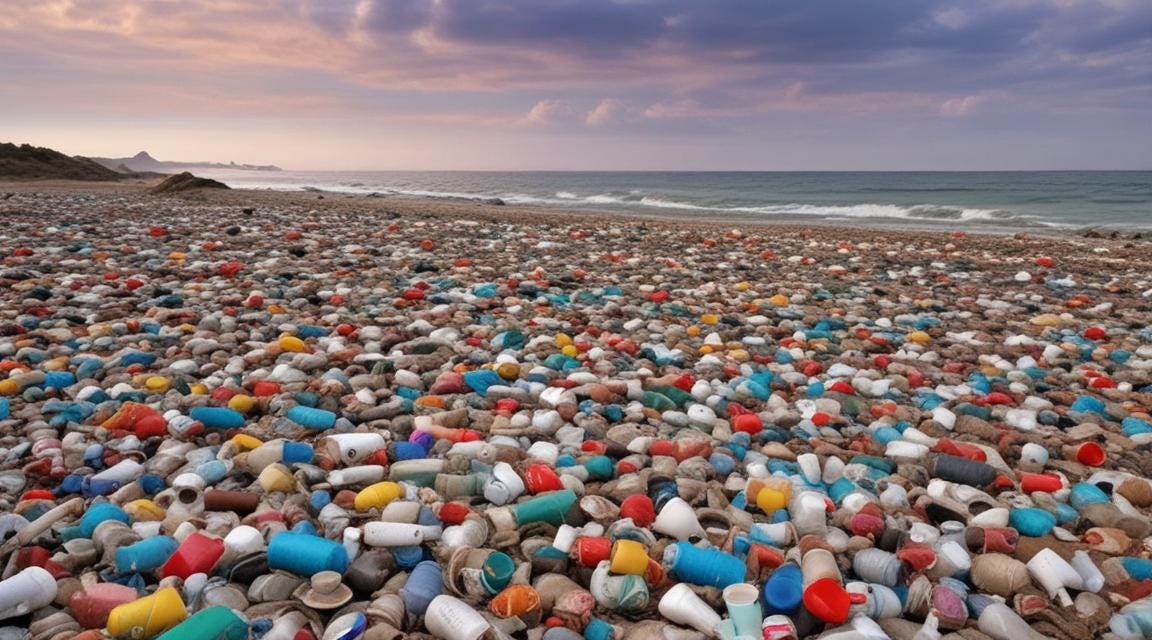Can a New UN Treaty Curb Plastic Pollution?
Global problems require global solutions
The UN has a solid track record when it comes to environmental treaties.
To be sure, governments are still far short of meeting the Paris Agreement goals, and the Conference of Parties (COP) process to close that gap is woefully insufficient. However, when it comes to crafting more narrowly targeted environmental treaties, the United Nations has been broadly successful.
The 1987 Montreal Protocol is probably the best example of a significant United Nations environmental treaty. This treaty created regulations around certain chemicals that, at the time, were burning a hole in the Earth's ozone layer. Thanks to this treaty, there is no longer a hole in the ozone. Another good example is the 1982 United Nations Convention on the Law of the Sea, which (among other things) developed a system of regulations for deep-sea mineral extraction. Also, the 1992 Convention on Biological Diversity supports healthy ecosystems and includes sub-treaties like the Convention on the Conservation of Migratory Species. More recently, the United Nations Treaty on Biodiversity of Areas Beyond National Jurisdiction, also known as the High Seas Treaty, was agreed upon last year as a “legally binding instrument for the conservation and sustainable use of marine biological diversity in areas beyond national jurisdiction.”
These agreements tend not to receive much attention beyond stakeholder communities, but the fact remains that the United Nations has been a successful platform for negotiating multilateral treaties on environmental issues.
Now, the UN has set its sights on plastic pollution.
Plastic Pollution is a Major Global Problem
Approximately 2,000 truckloads of plastic are dumped into the ocean each day, damaging ecosystems and harming marine life. As these plastics break down into smaller and smaller particles, they enter our food system. People around the world are increasingly consuming harmful amounts of plastic. Meanwhile, current recycling systems can't keep up with the pace of plastic production, which could triple by 2050. And of course, the manufacture of plastic requires the same fossil fuels that are accelerating climate change.
Plastic manufacturing is transnational, as are recycling systems. Plastic dumped into the ocean in one part of the world can affect countries downstream. Simply put, this is one of those global problems that calls for a global solution.
In 2022, diplomats from 175 countries kickstarted negotiations toward a UN treaty on plastic pollution and set a goal to reach an agreement by 2024. This week, in Ottawa, negotiators are in a penultimate round of talks as they race toward the end-of-year deadline.
My interview guest today, Erin Simon from the World Wildlife Fund, has been a close observer and participant in the long effort to craft a legally binding treaty to curb plastic pollution. We caught up just before delegates headed to Canada for this round of talks. Our conversation is freely available across all podcast platforms. The full transcript is available immediately below the fold for our paying supporters.
Transcript edited for clarity
Mark Leon Goldberg: Erin, before we talk about the substance of a potential treaty on plastics, can you make the case for why there ought to be such a treaty in the first place?
Erin Simon: Plastic pollution is quickly accumulating — one dump truck a minute of plastic pollution is entering our oceans every day, rising to about 10 million metric tons a year. We’re on a track to triple that in less than 20 years if we don’t change anything.
Plastic pollution is such a global issue. It has this huge scale at which it’s entering the world at such a fast pace. But it also includes production, use and waste supply chains that don’t adhere to country boundaries. So, you can’t solve for it in one part of the world and assume that will solve for another.
You’ve seen efforts that have gone into it solving it without this global coordination, whether it’s companies doubling down on their commitments or individual governments putting out policies and bans, but still plastic pollution is continuing to grow. It’s clearly needed to have the world come together and agree on how to address it collectively instead of separately.
Mark Leon Goldberg: Is the problem of plastic pollution fundamentally one related to marine life or is it something broader than that?
Erin Simon: It’s much broader than that. And actually the resolution that negotiators have agreed to discuss is about the whole lifecycle of plastic. It highlights that plastic pollution happens from the moment plastic is produced. 99% of plastics today are coming from oil and gas. And so, it identifies that you have plastic pollution entering our communities and our ecosystems from production, through use, and into its persistence as waste, where it’s harming communities and ecosystems and species.
Mark Leon Goldberg: What does a potential treaty on plastics seek to do? I know we are speaking just a few weeks before negotiators head to Ottawa, Canada for a round of talks intended to produce a treaty on plastics. What are some key elements of this draft treaty?




